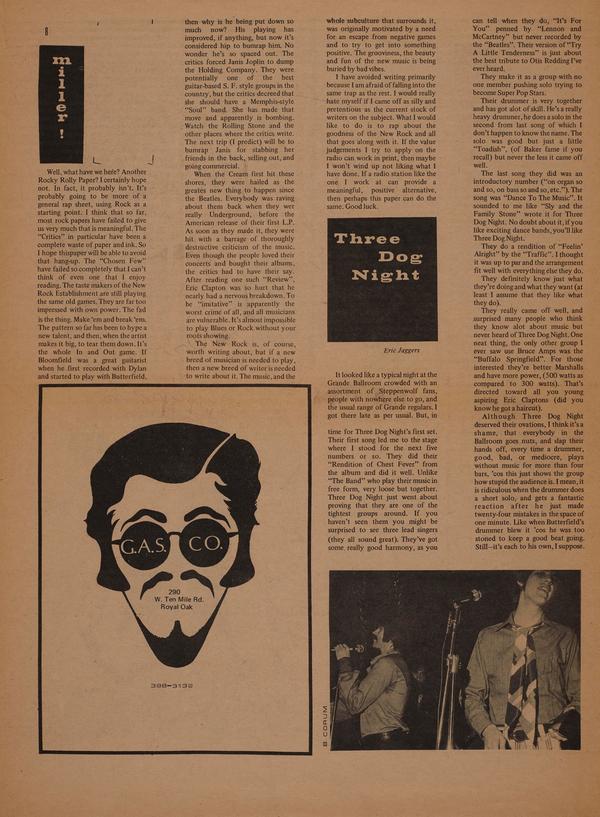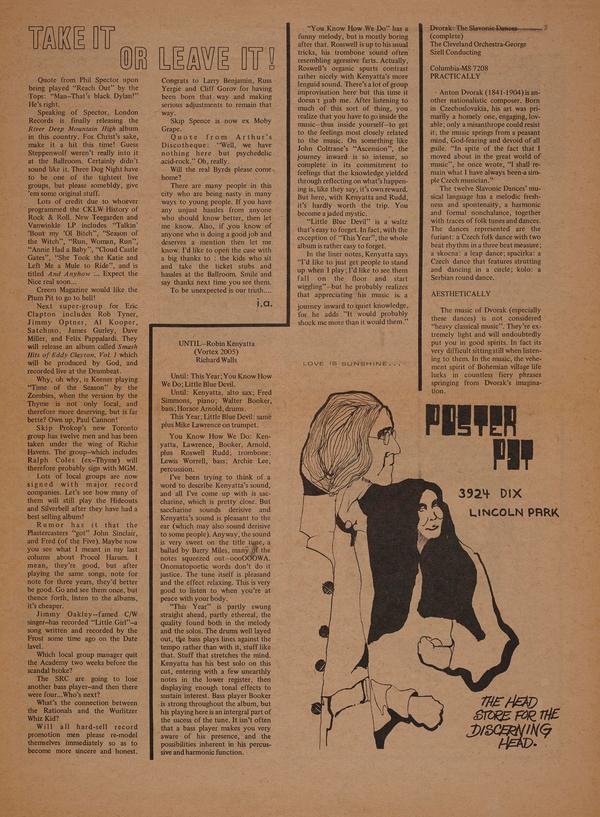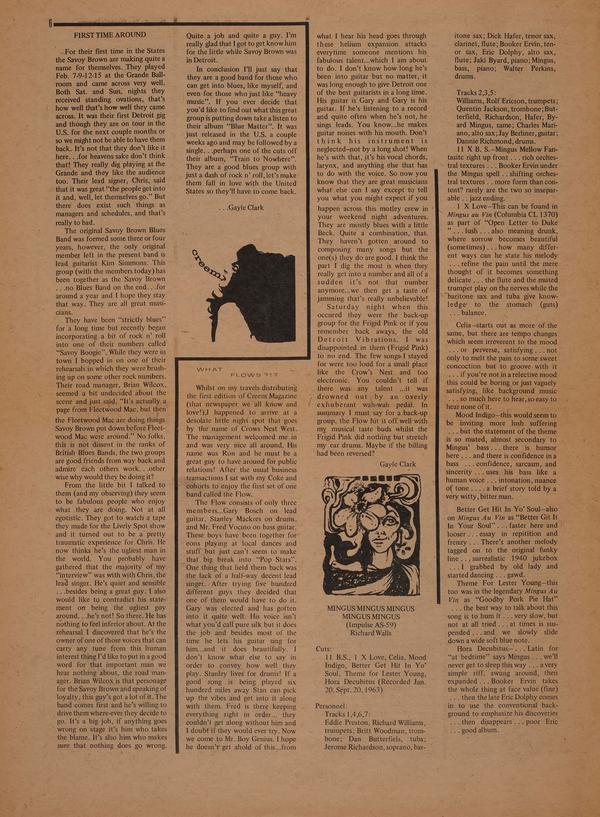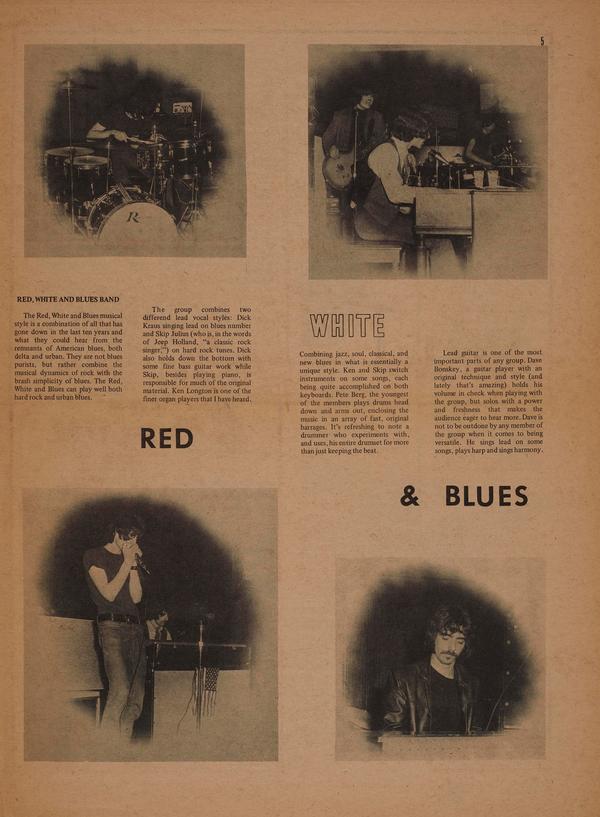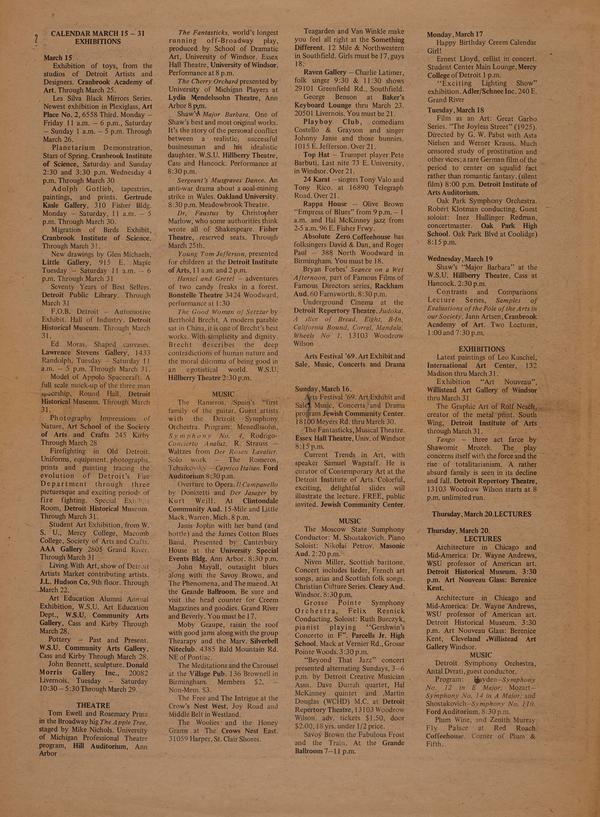BANGI
Eight months ago Terry Reid, guitarist and vocalist, got together with Keith Webb, drummer, and Eric Lease, organist, to play gigs in and around London. Last November with new organist, Peter Shelley, they made their debut in the States with the Cream at Madison Square Garden.

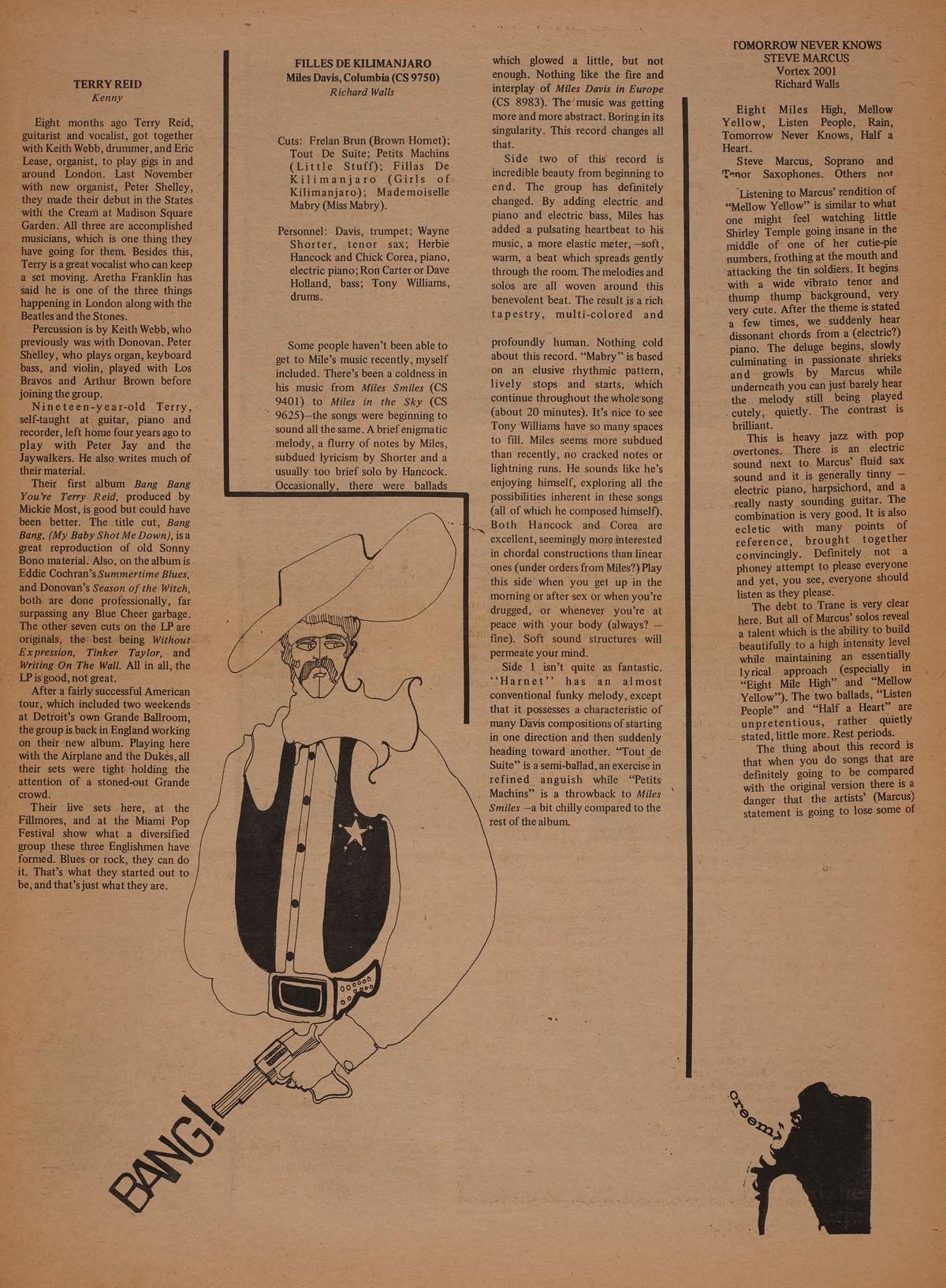
The CREEM Archive presents the magazine as originally created. Digital text has been scanned from its original print format and may contain formatting quirks and inconsistencies.
BANGI
TERRY REID
Kenny
Eight months ago Terry Reid, guitarist and vocalist, got together with Keith Webb, drummer, and Eric Lease, organist, to play gigs in and around London. Last November with new organist, Peter Shelley, they made their debut in the States with the Cream at Madison Square Garden. All three are accomplished musicians, which is one thing they have going for them. Besides this, Terry is a great vocalist who can keep a set moving. Aretha Franklin has said he is one of the three things happening in London along with the Beatles and the Stones.
Percussion is by Keith Webb, who previously was with Donovan. Peter Shelley, who plays organ, keyboard bass, and violin, played with Los Bravos and Arthur Brown before joining the group.
Nineteen-year-old Terry, self-taught at. guitar, piano and recorder, left home four years ago to play with Peter Jay and the Jaywalkers. He also writes much of their material.
Their first album Bang Bang You’re Terry Reid, produced by Miclde Most, is good but could have been better. The title cut, Bang Bang, (My Baby Shot Me Down), is a great reproduction of old Sonny Bono material.'Also, on the album is Eddie Cochran’s Summertime Blues, and Donovan’s Season of the Witch, bothare done professionally, far surpassing any Blue Cheer garbage. The other seven cuts on the LP are originals-, the-best being Without Expression, Tinker Taylor, and' Writing On The Wall. All in all, the LP is-good, not great.
After a fairly successful American tour, which included two weekends at Detroit’s own Grande Ballroom, the group is back in England working on their new album. Playing here with the Airplane and the Dukes, all their sets were tightholding the attention of a stoned-out Grande crowd.
Their live sets here, at the Fijlmores, and at the Miami Pop Festival show what a diversified group these three Englishmen have formed. Blues or rock, they can.do it. That’s what they started out to be, and that’s just what they are.
FILLES DE KILIMANJARO Miles Davis, Columbia (CS 9750) Richard Walls
Cuts: Frelan Brun (Brown Hornet); Tout De Suite; Petits Machins (Little Stuff); Fillas De Kilimanjaro (Girls of' Kilimanjaro); Mademoiselle Mabry (Miss Mabry).
Personnel: Davis, trumpet; Wayne Shorter, tenor sax; Herbie Hancock and Chick Corea, piano, electric piano ; Ron Carter or Dave Holland, bass; Tony Williams, drums.
Some people haven’t been able to get to Mile’s music recently, myself included. There’s been a coldness in his music from Miles Smiles (CS 9401) to Miles in the Sky (CS 9625)—the songs were beginning to sound all the same. A brief enigmatic melody, a flurry of notes by Miles, subdued lyricism by Shorter and a usually too brief solo by Hancock. Occasionally, there were ballads
which glowed a little, but not enough. Nothing like the fire and interplay of Miles Davis in Europe (CS 8983). The-'music was getting more and more abstract. Boring in its singularity. This record changes all that.
Side two of this" record is incredible beauty from beginning to end. The group has definitely changed. By adding electric, and piano and electric bass, Miles has added a pulsating heartbeat to his music, a more elastic meter, —soft, warm, a beat which spreads gently through the room. The melodies and solos are all woven around this benevolent beat. The result js a rich tapestry, multi-colored and
profoundly human. Nothing cold about this record. ‘‘Mabry” is based on an elusive rhythmic pattern, lively stops and starts, which continue throughout the whole'song (about 20 minutes): It’s nice tb see Tony Williams have so many spaces to fill. Miles seems more subdued than recently, no cracked notes or lightning runs. He sounds like'he’s enjoying himself, exploring all the possibilities inherent in these songs (all of which he composed himself). Both Hancock , and. Corea are excellent, seemingly xtidrp interested in chordal constructions than linear .ones (under orders from Miles?) Play this side when you get up in the morning or after sex or when you’re drugged, or whenever you’re at peace with your body (always? ■■■*■ fine). Soft sound structures will permeate your mind.
Side 1. isn’t quite as fantastic. “Harnet” has an almost conventional funky melody, except that it possesses a characteristic of many Davis compositions of starting in one direction and then suddenly heading toward another. “Tout de Suite” is a semi-baMad, an exercise in refined anguish while “Petits Machins” is a throwback to Miles Smiles —a bit chilly compared to the rest of the album.
TOMORROW NEVER KNOWS STEVE MARCUS Vortex 2001 Richard Walls
Eight Miles High, Mellow Yellow, Listen People, Rain, Tomorrow Never Knows, Half a Heart.
Steve Marcus, Soprano and T'mor Saxophones. Others not
Listening to Marcus’ rendition of “Mellow Yellow” is similar to what one might feel watching little Shirley Temple going insane in the middle of one of her cutie-pie numbers, frothing at the mouth and attacking the tin soldiers. It begins with a wide vibrato tenor and thump thump background, very very cute. After the theme is stated a few times, we suddenly hear dissonant chords from a (electric?) piano. The deluge begins, slowly culminatingin passionate shrieks and - growls, by Marcus while underneath you can just barely hear the melody still being played cutely,quietly.^The contrast is brilliant.
This is heavy jazz with pop overtones. There is an electric sound next to' Marqus’ fluid sax sound and it is generally tinny — electric piano, harpsichord, and a really nasty sounding guitar. The combination is very good. It is also ecletic with many points of reference, brought together convincingly. Definitely not a phoney attempt to please everyone and yet, you see, everyone should listen as they pleaseT '
The debt to Trane is very clear here. But all of Marcus’ solos reveal a talent which is the ability to build beautifully .to a high intensity level while maintaining an essentially lyrical approach (especially in “Eight Mile High” and “Mellow Yellow”). The two ballads, “Listen People” and “Half a Heart” are v unpretentious, rather quietly stated, little more. Rest periods.
The thing about this record is that when you do songs that are definitely going to be compared . with the original version there is a danger that the artists’ (Marcus) statement is going to lose some of


